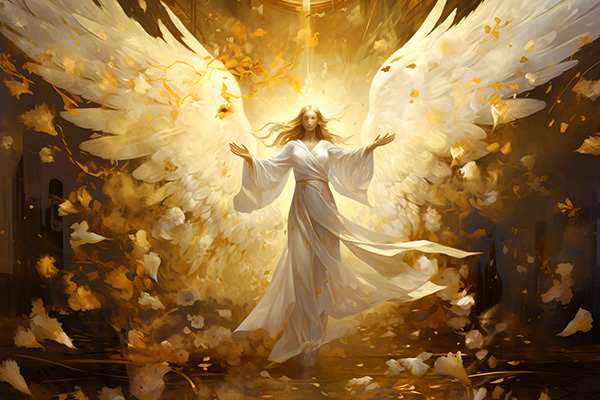mantra
Protect Yourself From Toxic Noise And Psychic Junk
 How often do you consider the health of your auric space or personal energy field, which is constantly being bombarded with so much negative energy these days. Are you doing enough to protect yourself?
How often do you consider the health of your auric space or personal energy field, which is constantly being bombarded with so much negative energy these days. Are you doing enough to protect yourself?
First and foremost, you need to have healthy boundaries. Each of us needs and deserves to have a safe place, a sense of self-worth, and protection from others. Think about what happens to a beach that is battered constantly by waves. It will wear down and eventually disappear. If you don’t have boundaries, your very identity will be like those grains of sand.
Learning to connect back to the Earth and nature is essential to our well-being. This can be as simple as walking without shoes in a natural space, or by keeping plants in your living space. When we are separate from our natural selves, we lose perhaps the most important part of our soul.
By walking in nature, you are literally reconnecting. Like a lightning bolt discharging energy when it strikes solid ground, you are releasing all the negative energies that accumulate in your body. Take a friend, or walk your dog if you have one.
If these energies, and their associated negative effects, are like frantic little animals in the cage of our bodies, we need to find ways to calm them. Centering rituals using meditation, candles, crystals, or whatever individual tradition you may follow, need to be part of your day, just like meals and baths.
Maybe This Is How We Mend Our World
 I have certainly been trespassed against over the years, as I suspect you may have too: maligned, misunderstood, abused, betrayed. Many of us have been hurt and wounded.
I have certainly been trespassed against over the years, as I suspect you may have too: maligned, misunderstood, abused, betrayed. Many of us have been hurt and wounded.
For many of us lifetimes of pain also seem to rise to the surface now, as if this era has come to collect on both the debts and the blessings.
Some of my wounds in this lifetime occurred at a young and tender age, when there seemed to be no healing granted; when the best I could do then was retreat and lick my wounds alone. There was no wise elder at my side, no sacred ceremony to mark the grief, no balm from the spirit realms. Just the aching silence of pain, and the quiet hope that one day, perhaps, I would understand why.
Since that time so long ago, I have also seen much vindication. This ability to witness what I have called “the coming around of the going around,” hasn’t been only in seeing karmic issues resolved for little slights, but for big wounds as well.
I’ve watched as Spirit, with its own perfect timing, allowed clarity and closure to emerge…sometimes years later, sometimes through unexpected channels. There is a strange and sacred justice to the Universe that rarely moves on our schedule, but always, always moves.
Justice. Yes, always in the end. But what of forgiveness?
It all shifted for me when I came to know the ‘big picture’ in the powerful prayer, “forgive us our trespasses, as we forgive those that trespass against us.” These words are not just religious rote, but an energetic key to spiritual evolution. Continue reading
The Spiritual Power Of The Words You Speak
 Have you ever stopped to truly consider the words you speak? Most of us talk all day, every day, without realizing the impact of each syllable we send out into the world.
Have you ever stopped to truly consider the words you speak? Most of us talk all day, every day, without realizing the impact of each syllable we send out into the world.
Words are much more than just communication sounds. They’re vibrations, frequencies, and intentions. Whether spoken softly, shouted out loud, or whispered quietly to yourself, every word carries mystical energy.
In many spiritual traditions, the spoken word is seen as a powerful metaphysical force or divine power. It is a force of creation and transformation.
From magical incantations to sacred ceremonies, words have long been used to shape everyday reality, influence the world and improve life.
The earliest recorded reference to the power of speech dates back to ancient Mesopotamia. In the city of Uruk, magical incantations were found carved onto clay tablets dating back to approximately the 5th century BCE. These spoken spells were used for protection, healing, and influencing others, revealing a deep understanding of the energetic and powerful nature of speech as early as 2,500 years ago.
Around the same time, the ancient Egyptians believed in the concept of heka, which is often translated today as “magic” but really means “divine creative power.” They believed the gods used heka to create the world, and that humans could access this same creative power through sacred words called hekau.
Aligning With Lunar Energy Can Transform Your Life
 The Moon may appear subtle and serene in the night sky, but don’t be fooled. Her influence on our lives runs deep.
The Moon may appear subtle and serene in the night sky, but don’t be fooled. Her influence on our lives runs deep.
Many of us feel her pull, experiencing everything from restless sleep to emotional surges, even if we don’t quite understand why. Her cycles are ancient, her rhythm is eternal, and her whispers can guide us toward profound inner harmony if we choose to listen.
The Moon has been a source of mystery, reverence, and deep spiritual connection for humanity since the dawn of civilization. Across cultures and generations, she has been worshiped as a deity, tracked as a celestial guide, and honored through rituals that align with her phases.
Ancient civilizations such as the Babylonians, Egyptians, and Greeks meticulously studied her movements, associating them with tides, fertility, and even the passage of time.
The lunar calendar, still used in various traditions today, reflects the importance of her cycle, shaping religious observances like Ramadan and the Chinese New Year.
Her phases—waxing, full, waning, and new—have inspired countless traditions rooted in transformation and renewal. The Full Moon, in particular, has been regarded as a time of heightened energy, illumination, and manifestation.
In the realm of personal and spiritual health and well-being, the Moon is also much more than a celestial body. She is a divine force and a sacred mirror to our innermost energetic tides. By syncing with her cycles, we can unlock a deeper connection to ourselves, the Earth, and the Universe.
Breaking Through The Walls Of Disconnection
Have you felt like you have been talking to brick walls in your relationships lately? If so, rest assured that you are not alone! This issue has been coming up more and more in my readings. Many of my clients complain that they feel like they are not being heard or that they are simply not getting through to people.
Many factors contribute to this feeling. With so many of us addicted to our phones and social media, it’s become very easy to be physically present but mentally elsewhere. This often makes any attempt to have a meaningful conversation feel like it’s taking place in an echo chamber.
We are surrounded by so many distractions these days — constant notifications, endless scrolling, and click-bait videos that often prioritize drama and misinformation over truth and depth. These distractions pull our attention away from what really matters: meaningful connection, both with others and with ourselves.
Modern life is busy and demanding. People are constantly juggling many responsibilities and stresses, and often feel drained or overwhelmed. Many of us rarely have the emotional bandwidth to fully engage in meaningful conversations.
On top of that, people are less likely to have face-to-face conversations, or at least make a phone call, as most communication these days takes place via text messages and social media comments. As a result, there is a growing lack of communication skills and many misunderstandings occur because people have difficulty expressing themselves clearly or actively listening when they are actually having a conversation in person.
Begin By Loving Yourself Unconditionally
 The first person each of us learns to love is ourselves. And that’s exactly how it should be, although many of us seem to forget this fundamental truth as we navigate the complexities of life.
The first person each of us learns to love is ourselves. And that’s exactly how it should be, although many of us seem to forget this fundamental truth as we navigate the complexities of life.
But if we don’t cultivate self-love, how can we expect to show genuine love and care for anyone else?
In our society, love is often misunderstood as an abstract “thing” that we either have or don’t have. This view is fundamentally flawed. Love is not just a passive state or a fleeting emotion; it’s an active, conscious choice. We must make self-love an integral part of our daily thoughts and actions.
Unfortunately, our culture is often harsh, judgmental, and narrow-minded. This societal backdrop can deeply affect our self-perception, making it easy to forget how to love ourselves. Many people experience moments of self-doubt or feel less than perfect.
This self-criticism can snowball and lead us to constantly put ourselves down. But this doesn’t have to be our reality. The foundation of all healthy relationships – romantic or otherwise – is unconditional self-love.
So how do we cultivate this essential self-love? It begins with simple affirmations. Remember that you are you – and that’s more than enough. Create a mantra that resonates with you and repeat it regularly. When you’re comfortable, try speaking directly to your reflection in the mirror. It may feel awkward at first, but it’s a powerful way to reinforce positive self-esteem.

